Michigan State Parks offer a variety of recreational activities, including hiking, camping, fishing, kayaking, and swimming. Many of the parks have trails that wind through forests, around lakes, and along rivers, offering visitors a chance to experience Michigan’s natural beauty up close.
In addition to outdoor activities, Michigan State Parks offer cultural and historical attractions. Many parks have historical landmarks, interpretive centers, and museums that showcase Michigan’s rich cultural and natural heritage.
Michigan State Parks offer visitors a chance to experience the beauty and diversity of Michigan’s natural landscape. With so many parks, there is something for everyone, making them a must-visit.
Table of Contents
Fun Facts about Michigan’s State Park System
- Michigan has 103 state parks and recreation areas, with more in progress.
- Michigan has over 350,000 acres of land in its state parks.
- Michigan has over 1,000 miles of trails within its State Parks System.
- In Michigan, you’re never more than a half hour from a state park, state forest campground, or state trail system.
- Vehicle access to Michigan State Parks requires entry fees referred to as the Michigan State Park Recreation Passport, which you can purchase as an annual or day pass at the gate or online. Michigan residents can buy one when they purchase their Michigan car license plates. However, a Recreation Passport isn’t required for entrance if you’re bicycling or hiking.
- Michigan offers two free fishing weekends annually. During the summer, it happens the Saturday and Sunday following the first complete week of June. The winter weekend is President’s Day Weekend. During these free fishing weekends, they waive all two-day fishing license fees. Residents and out-of-state visitors can fish Michigan’s waters for all fish species. Other fishing regulations still apply. Also, they don’t require a Recreation Passport into state parks and boating access sites during Free Fishing Weekends.

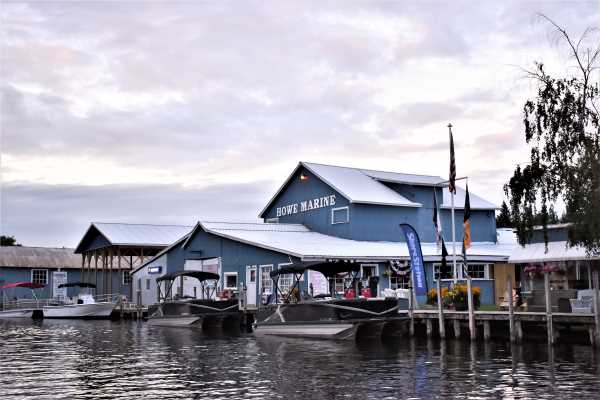
Burt Lake State Park
Burt Lake State Park, in northern Michigan, is in the southeast corner of Burt Lake, where the Sturgeon River and Burt Lake intersect. This is the heart of the Inland Waterway, a series of lakes and rivers extending 38 miles from Lake Huron to Crooked Lake.
The 400-acre state park offers year-round fun through water sports, hiking, and camping. Its shoreline features 2,000 feet of sandy beach, perfect for swimming, building sandcastles, or grabbing a few rays to improve your tan.
Water Sports
Burt Lake is 10 miles long, five miles across at the widest part, and about 73 feet deep, so you’ll find an abundance of water sports to keep you busy—fishing, swimming, and boating.
You can fish along the shoreline on the northern boundary of Burt Lake State Park, along the Sturgeon River. You’ll find walleye, perch, trout, bluegill, and pike.
Burt Lake State Park has a day-use area with a great beach for swimming and shoreline fishing. It also has an overlook tower, a picnic area with picnic tables, and a boat launch, including a skid pier and parking areas for cars and trailers.
Hiking
The park’s entrance road divides the foot trail into two. On the north side of the road, the trail follows the Sturgeon River, and on the south, it goes through the woods and the modern campground. To access the path, park next to the contact station. They don’t allow bicycles, horses, or motorized vehicles on this trail. Additionally, they groom the trails during winter for cross-country skiing, show shoeing, or even just walking. In addition, the winter months are a great time to do some birding on the trails.
While Burt Lake State Park offers a pet-friendly shoreline in the non-designated bathing beach area, dogs must be on a 6-foot leash and always attended. On-leash pets are also welcome on the trails.
Camping
Open from May through October, Burt Lake State Park offers 306 modern campsites and four modern restrooms, including shower buildings and toilet facilities. The park also has a group-use area.
Check-in time is 3 p.m., and check-out time is 1:00 p.m. Remember that the park service officials need these two hours to prepare the site for you. In addition, you can’t camp for more than 15 consecutive nights, and someone must be at the campsite every night.
The modern campground has two loops, a west loop and an east loop. Sites with a view of Burt Lake are sunny and large. The other sides offer shade from hardwoods such as maple and oak. You’ll find the campground next to the swimming beach, boat ramp, playground, and picnic area. Additionally, you’ll have either 30 or 50-amp service throughout the campground. They also have a sanitation station and recycling.
If you want a roof over your head, rent one of their mini cabins rather than sleeping under the stars. Finally, you’ll find a store nearby if you forget something or run out of a necessity.
If you prefer a comfortable bed over camping, reserve one of these Indian River local motels.
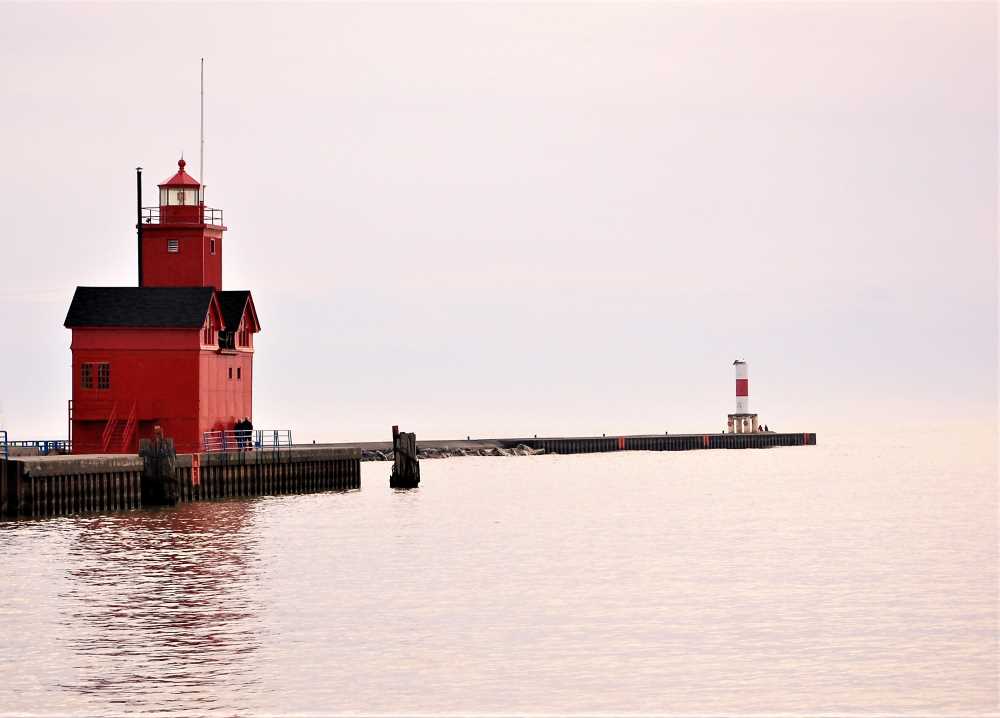
Holland State Park
With over two million visitors annually, Holland State Park is a popular destination and one of Michigan’s most frequently visited state parks. Due to its annual spring Tulip Time Festival, you may be familiar with Holland in West Michigan. The fun continues into summer by building sandcastles on Lake Michigan’s sandy beaches, watching the sunset over the lake, and viewing the iconic lighthouse fondly called Big Red. It’s one of Michigan’s most photographed lighthouses.
More Great Lakes fun includes boating and fishing on Lake Michigan, easily accessible through the park’s boat launches. If fishing on the Great Lakes is on your bucket list, you’ll find a boat launch one mile east, with a fish-cleaning station for those that didn’t get away.
Plan a long weekend in Holland, where you can camp at one of the park’s two large campgrounds, each with a unique offering. The Lake Macatawa Campground features 211 campsites, while the Modern Beach Campground has 98 modern campsites.
If you need more comfort than a tent and don’t have an RV, then the park’s cabins are a good option. The Whitetail and Beacon camper cabins feature fantastic views of Big Red and the channel. With electricity and heat, the cabins sleep up to seven people in two rooms with bunk beds featuring twin and full mattresses.
Read More: 9 Things to Do at Sleeping Bear Dunes National Lakeshore
Warren Dunes State Park
Often considered the western gateway to Michigan State Parks, Warren Dunes State Park is about 20 minutes from St. Joseph, Michigan. With 1,952 acres of fun and three miles of Lake Michigan shoreline, Warren Dunes State Park delivers many things to do. Stunning views from the top of the 260-foot wild dunes are the perfect place for hang gliding. (You’ll need a permit.) In addition, the park has six miles of hiking trails if you’re in for milder adventures.
The year-round park features eight trails, including a cross-country ski trail. The trails traverse various scenic areas, including the Yellow Birch Loop, where the well-known boardwalk crosses wetlands.
In the spring and fall, bird watchers will find a variety of species because Warren Dunes State Park is a stopover on their migratory route.
If you’re an outdoor enthusiast and camping is your preferred overnight accommodation, the Lake Michigan shore has two popular campgrounds. You’ll unwind to the sounds of Lake Michigan’s waves in their lakefront camping. Whether you prefer modern with hot water, bathrooms, and electricity or a more rustic campsite, you can have it all in this park.
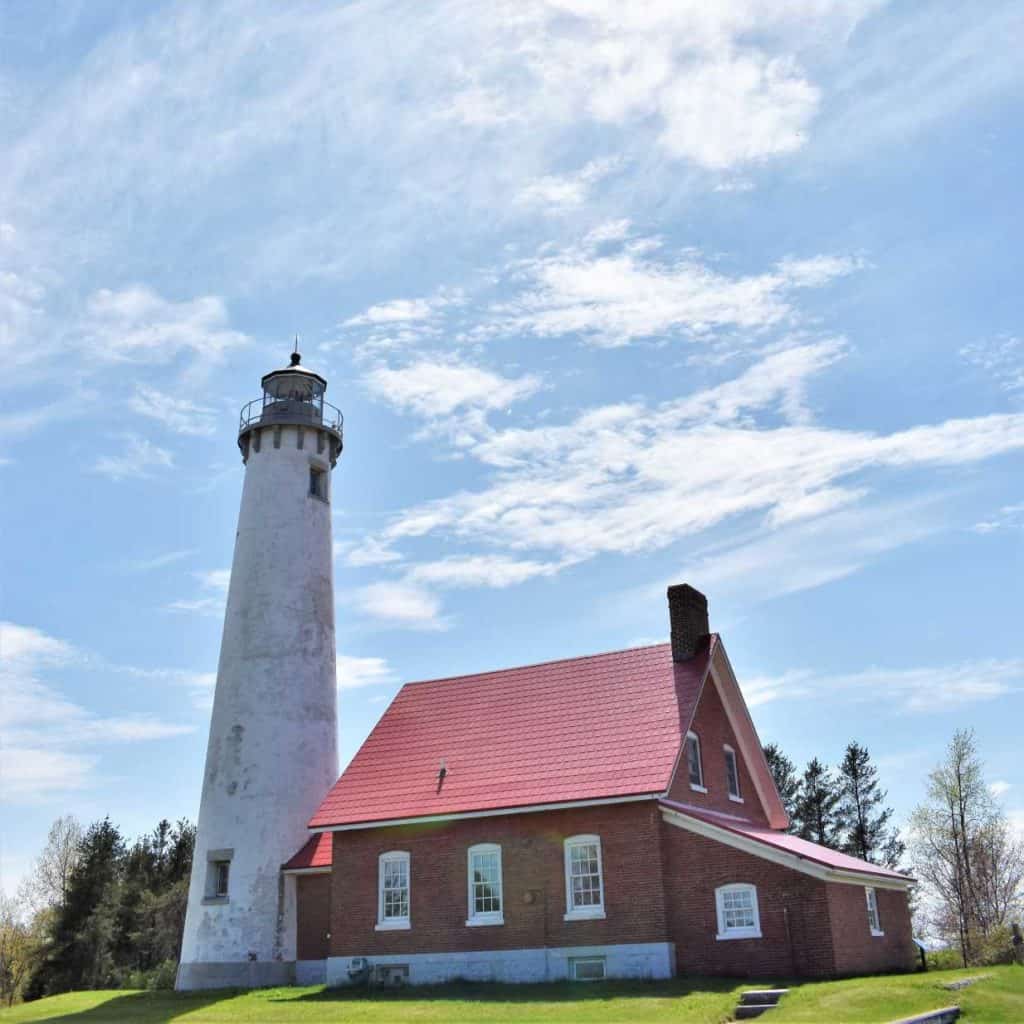
Tawas Point State Park
Tawas Point State Park is a bit off the beaten path, as once you leave the expressway, you’ll have about 30 miles on a two-lane highway to reach your destination. However, the drive gives you a chance to decompress. Once you get to the 183-acre state park on a sliver of land forming Tawas Bay, you’ll find plenty to keep you busy. At the park, Lake Huron offers a sandy beach with warmer waters. The shallow water is a great spot for swimming.
Tawas Point Lighthouse is the only lighthouse designed in the Victorian-era style on the Great Lakes for those who love maritime history. I loved the lighthouse tour, learning about the keepers, and climbing the tower to see a panoramic view of Lake Huron. The lighthouse offers a lighthouse keeper’s program, where you can be a lighthouse keeper for a week in the summer, providing tours of the former lighthouse keeper’s quarters and the light tower.
Birding is a popular activity at Tawas Point State Park. Birdwatchers from throughout the region enjoy this park in the spring and fall, where it’s a layover for migratory birds. You’ll see hundreds in their natural setting, so take your binoculars. If you’re a photographer, take your long lens to get some close-ups of birds in flight.
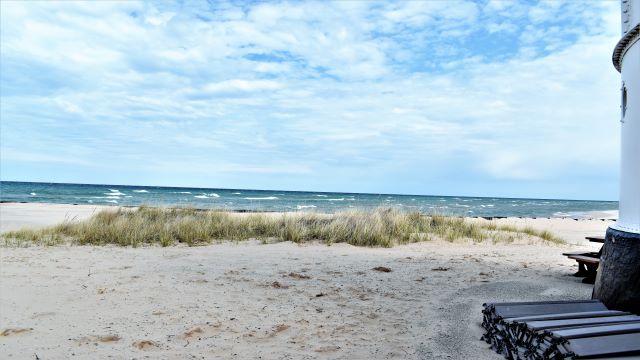
Ludington State Park
Ludington State Park, the most popular state park for camping, has booked the most camping nights in any location in the Michigan state park system. That fact isn’t surprising because the park has a rich history, extensive hiking, and expansive beaches along Lake Michigan and Hamlin Lake.
First, explore seven miles of Lake Michigan’s expansive beach shoreline. Then, check out the Lake Michigan Beach House on the National Register of Historic Places. In 1935, the Camp Ludington Civilian Conservation Corps (CCC) members constructed the building using Mason County lumber and repurposed bricks from Ludington’s old Morton Salt factory. The CCC also built seven stone trail shelters to provide a sheltered place to rest while exploring. Three remain today for hikers’ use.
Hiking Trails
Offering 25 miles of hiking trails, Ludington State Park features trails of all lengths and terrains, including the Sauble River Trail—a comfortable one-mile trail that takes about 30 minutes to explore. Many of the hiking trails are also biking trails. The course accommodates wheelchairs and provides access to the Big Sauble River and Hamlin Dam. Once you reach the dam, throw in a line to relax and enjoy some fishing. The dam is a good spot when the salmon run in the fall. At Hamlin Dam, you’ll find signs telling its 200-year history. Then, check out Hamlin Lake Beach, a swimming area less populated than the neighboring Lake Michigan Beach.
Water Trails
Then, take one of the park’s two water trails via a canoe or kayak, which you can rent at the Hamlin Beach area for a different trail. A new two-mile canoe and kayak water trail will travel north of Hamlin Lake around Lost Lake for all paddling abilities, with signage in the water for paddlers to follow the route. You can use this trail with the new universal access kayak launch in Hamlin Lake for a fully accessible paddling route. In addition to the four-mile, intermediate-level canoe trail in Hamlin Lake, this trail starts at the swimming beach.

Big Sable Point Lighthouse
A trip to Ludington State Park isn’t complete without a hike to Big Sable Point Lighthouse, where you can see scenic views of Lake Michigan from the tower. The lighthouse, built in 1867, is the second tallest on Lake Michigan’s eastern shore and one of the oldest continuously operating in the state. You access the historic lighthouse via a 1.8-mile walk down a sandy trail. Connected to the black-and-white tower are the original keeper’s quarters. If you climb the 130 steps to the tower room’s viewing platform, walk on the catwalk to enjoy stunning views of Lake Michigan.
If you find the almost four-mile roundtrip hike daunting, take a roundtrip bus ride to the lighthouse during one of the Bus Days offered several times during the warmer months. In addition, guided tours of the lighthouse and live concerts reward those who make the trip.
Piper’s Pro Planning: If walking on sandy beaches presents a mobility challenge, and you still want to take in the Lake Michigan shoreline, you can reserve one of two Action Track Chairs at Ludington State Park. You can make free reservations on the park’s website.
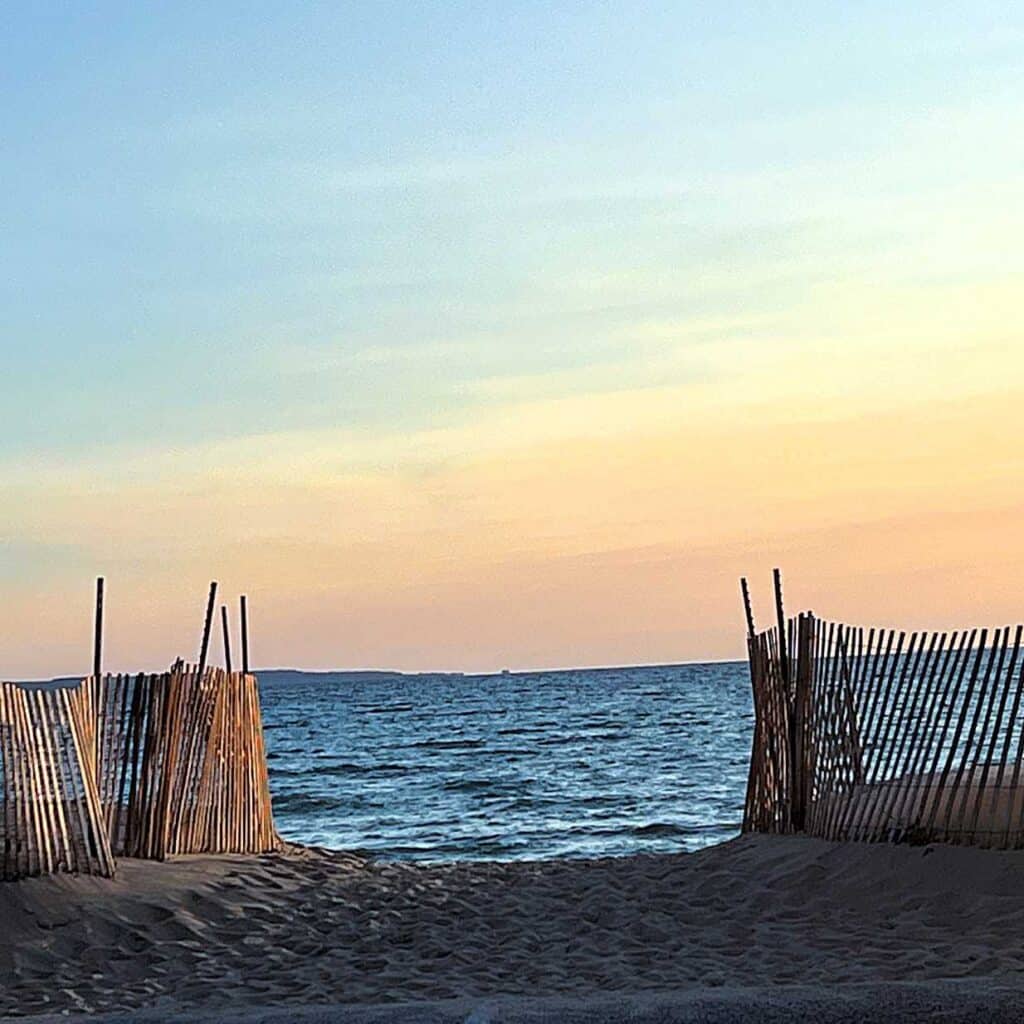
Petoskey State Park
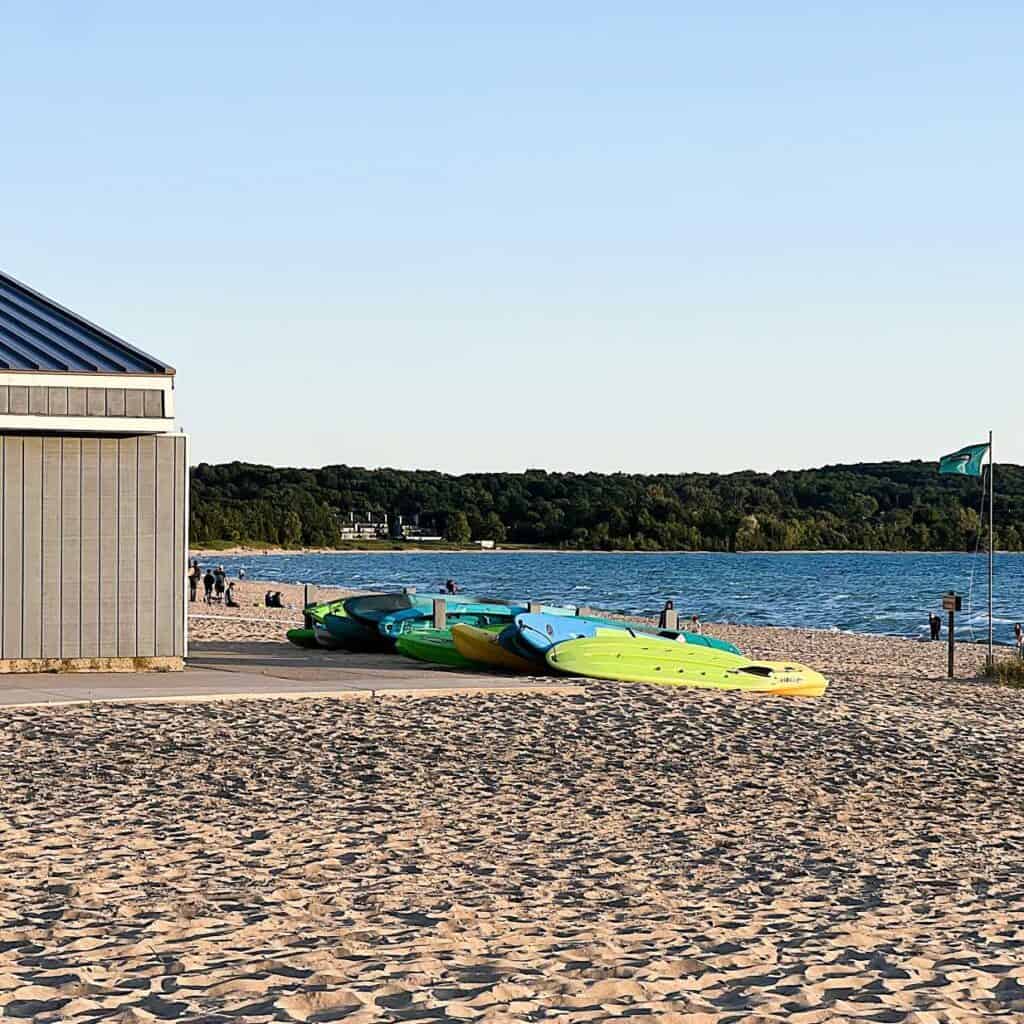
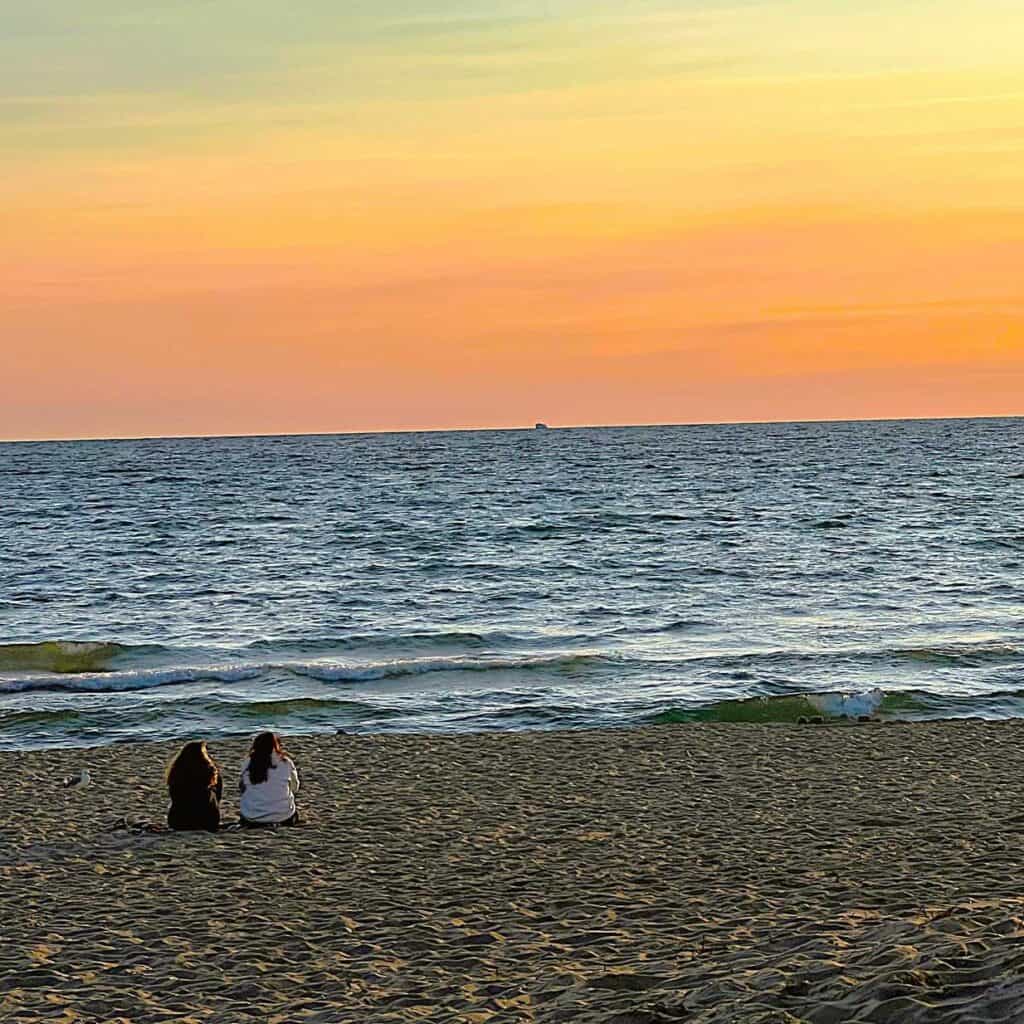
Petoskey State Park
Petoskey State Park, located on Little Traverse Bay, is home to one mile of beautiful beach along Lake Michigan. The park features two modern campgrounds and a bike path. Located three miles northeast of Petoskey and six miles south of Harbor Springs, the park’s beach is a popular spot for those wanting to find Petoskey stones.
A popular scenic view is the Old Baldy Trail, a half-mile loop to the top of Old Baldy Dune.
Piper’s Pro Planning: While pets are welcome in other parts of the park, they aren’t allowed along the beaches due to the piping plover habitat. Your pets must be on a six-foot leash.
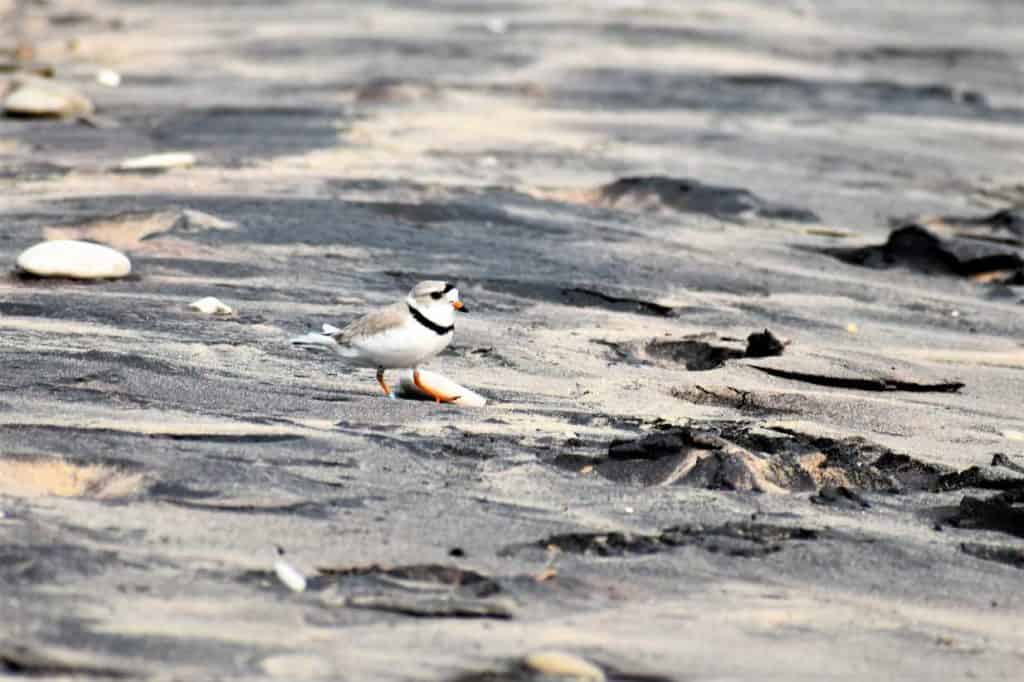
Keith J. Charters Traverse City State Park
Situated in urban Traverse City, about two miles from downtown, I like the location of Keith J. Charters Traverse City State Park. It is one of my favorite parks in Traverse City, with about 1,320 feet of Lake Michigan frontage. Off U.S. 31, the day-use area features a quarter mile of sandy shoreline. The easy access makes it the perfect place for a break between other activities. So, stop by, sit on the beach with a good book, and pass an hour of downtime. Then, of course, if you have the kiddos along, they’ll enjoy the well-equipped playground. The park also features a picnic area, so you can grab some takeout for a quick lunch.
Besides the day-use area, the 75-acre park features a modern campground, a fully equipped lodge that sleeps up to 11, and some mini cabins. The lodge is perfect for those who aren’t ready for camping but want to enjoy the great outdoors. However, they require a weeklong rental from Memorial Day to Labor Day.
Piper’s Pro Planning: If you aim to sample some of the area’s abundant cherries, starting the first weekend in July for eight days is a fun time to visit. That’s when they have the National Cherry Festival in Traverse City. With live entertainment and all things cherry, the festival is fun, but be aware that over 500,000 people attend the festival, so the area does get busy.
Read More: National Cherry Festival in Traverse City, Michigan
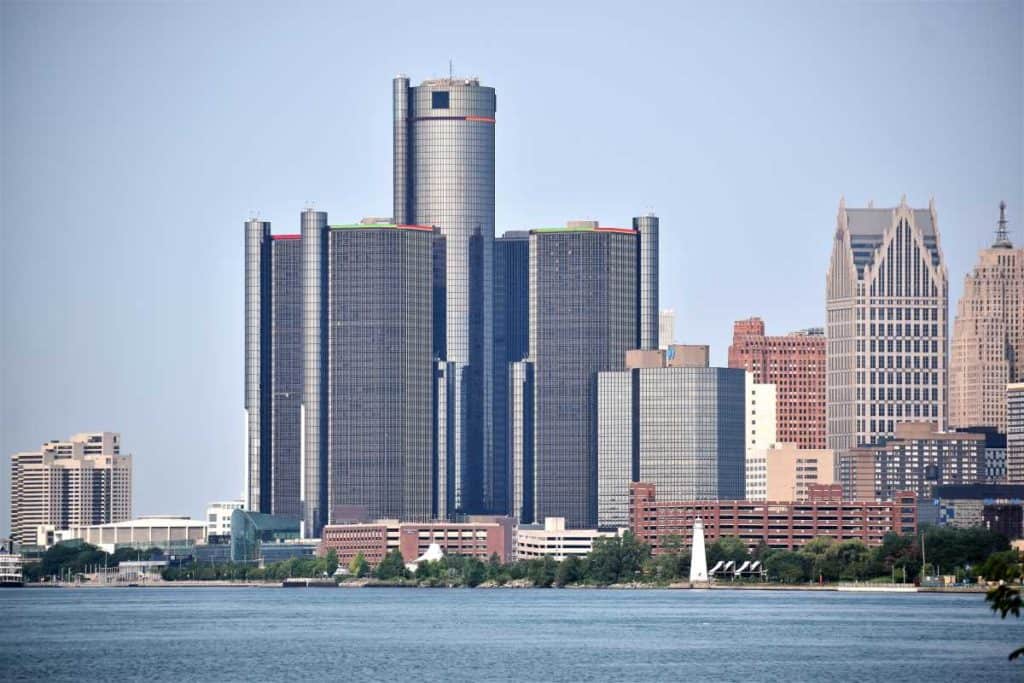
Belle Isle Park
Tucked away on an island in the Detroit River, minutes from downtown Detroit, the 985-acre Belle Isle Park is an urban oasis. It’s just over the MacArthur Bridge, approximately 3 miles from the Renaissance Center. While you can return to nature here, with the Belle Isle Nature Center, lakes, kayaking, canoeing, and fishing opportunities, you can also find more urban things, like an aquarium, conservatory, and museum. Bell Isle Park is one of the city’s best places to return to nature.
Urban Activities
The Belle Isle Aquarium, the oldest in the United States, was upgraded in 2021. However, it still has the original arched ceiling with stunning green tile, giving the aquarium an underwater feel. With over 100 fish species, including those from the Great Lakes and worldwide, you’ll want to spend at least an hour here.
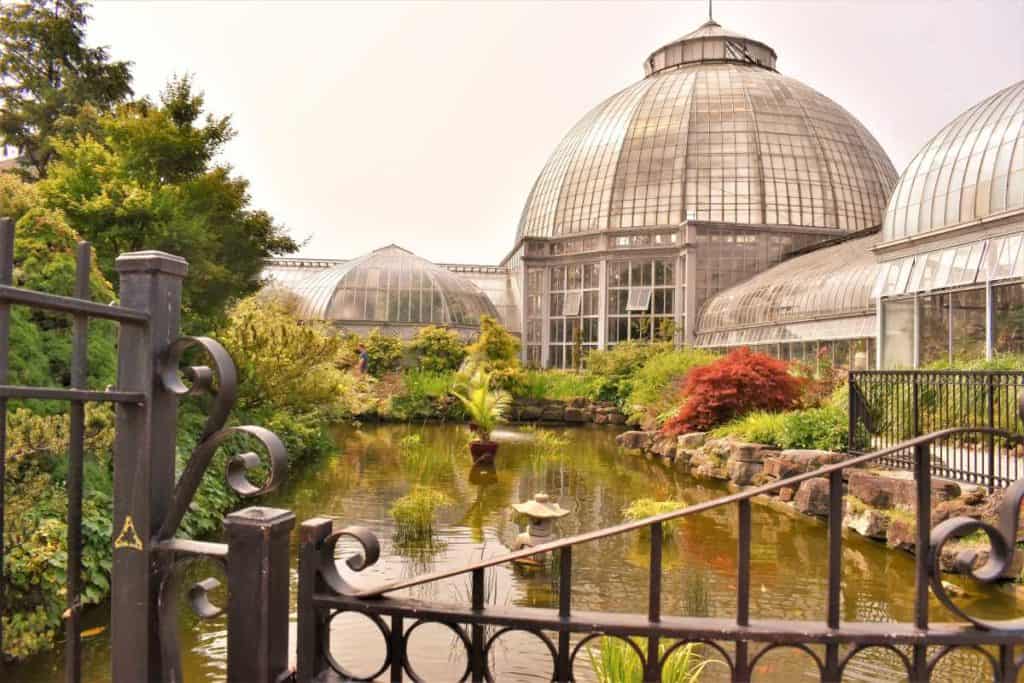
The Anna Scripps Whitcomb Conservatory covers 13 acres, including a Lily Pond and a formal garden. The conservatory houses five distinct areas: a Tropical House, a Cactus House, the Palm House, a sunken Fernery, and the Show House. The Show House features a rotating exhibit of flowering plants.
Dossin Great Lakes Museum tells the story of Detroit’s role in maritime history. In addition to the indoor displays, the museum has various outdoor artifacts. One historical element is the anchor from the Edmund Fitzgerald.
Belle Isle Nature Center offers various nature activities that will interest everyone, from tots to adults. You’ll find activities like clouds and mud for the littles, while adults will have fun on their nature walks. While there isn’t a charge for their programs, you must go to their website and register, as they have limited space for each program.
Piet Oudolf designed the more than 3-acre Oudolf Garden Detroit, which features four specific areas—the Main Garden, the Meadows, the Rain Garden, and the Bird Border. You can check the garden’s website before visiting to see what is currently in bloom. The garden is open during the same hours as Belle Isle Park. The Main Garden is ADA-accessible, and you’ll find a small accessible parking lot west of the garden.
Most of the urban activities are free, but the Dossin Great Lakes Museum charges admission.
Piper’s Pro Planning: On a typical day, you can park in front of the aquarium and conservatory, so you won’t need to walk far to visit them. You’ll also find a complimentary track chair if you have mobility challenges.
Sports
In addition to a designated swimming beach open from Memorial Day to Labor Day, you’ll find many other sports in the park. You can play team sports like football, basketball, and softball. You also find sports like golf, handball, tennis, and racquetball. For sports, the park charges fees for using the athletic fields.
Other Features
Another unique feature in the park is the Livingston Memorial Lighthouse, located at the island’s north end. It’s the oldest lighthouse in the United States, built from marble. Unfortunately, they don’t offer public tours while it is a working lighthouse. While there aren’t any restaurants on the island, you can purchase food from food trucks throughout the park during the peak season.
Pin this to your favorite Michigan Board!

While Piper is a lifelong Michigander, she’s had adventures worldwide. Bomb-sniffing dogs chased her in the middle of the night in Bogota (working late), gate agents refused her boarding to Paraguay (wrong visa), and US Marshals announced her seat number on a plane while looking for a murder suspect (she’d traded seats). It’s always an adventure! She even finds exciting activities in her home state of Michigan, where she lives in Lansing with her husband, Ross Dingman, her daughter, Alexis, and two granddaughters.

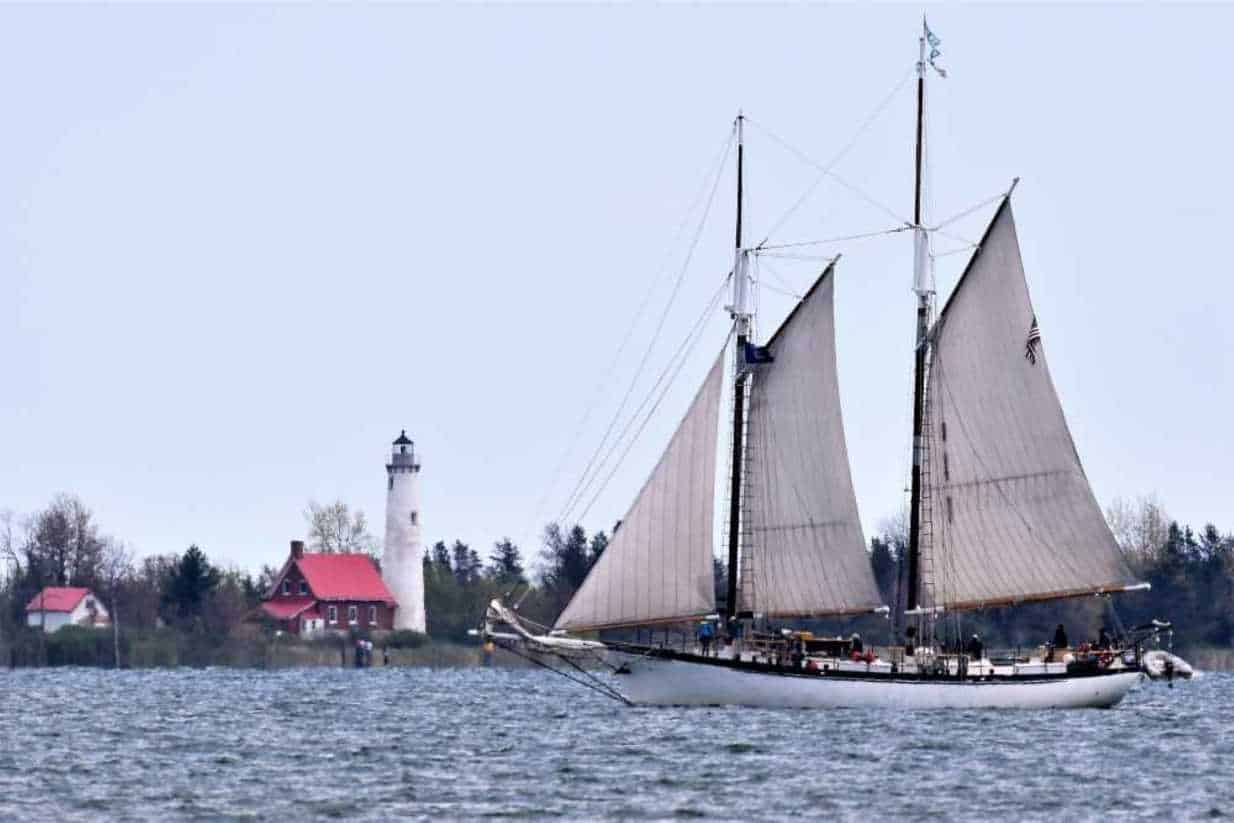



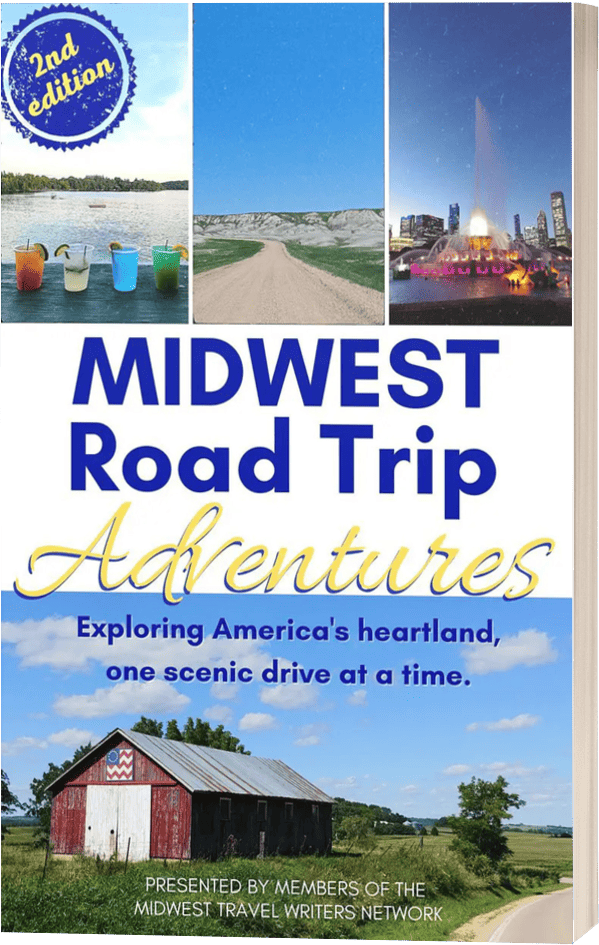
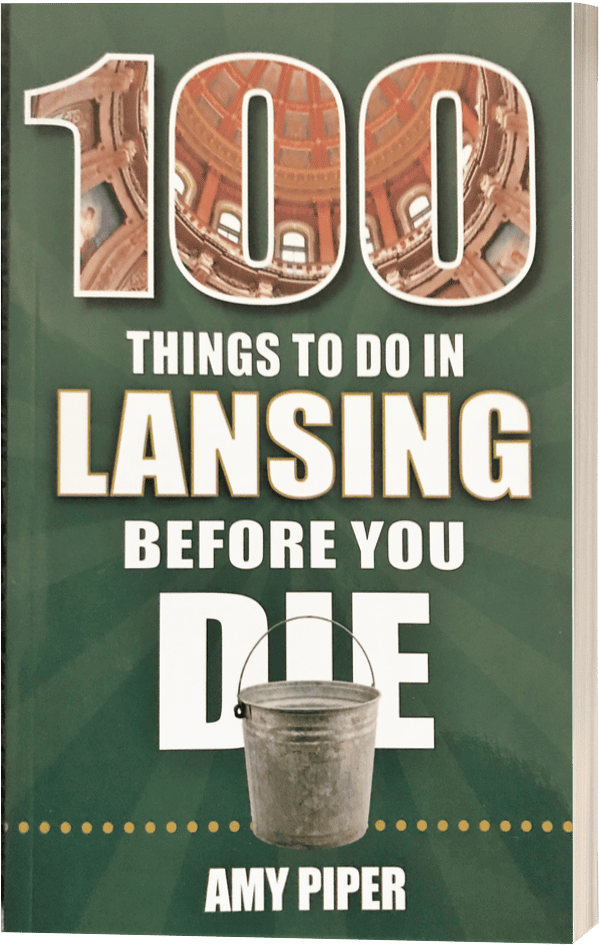

I liked the way you highlighted the features and amenities of each state park, such as the trails, the camping, the lighthouses, and the views. I appreciate the maps and the links to the official websites.